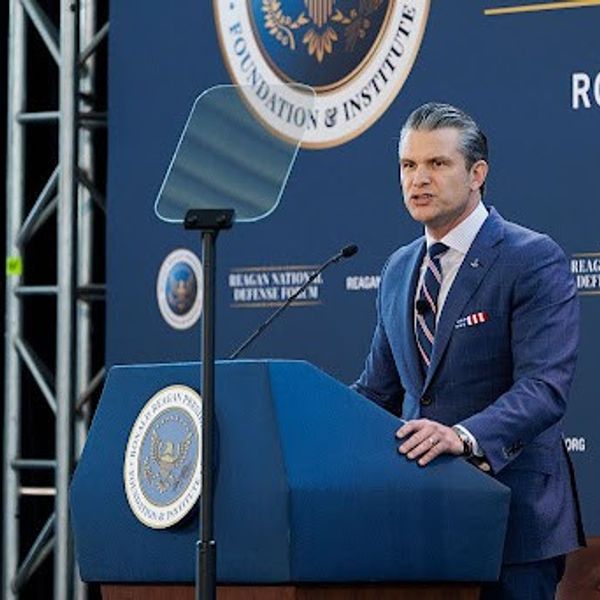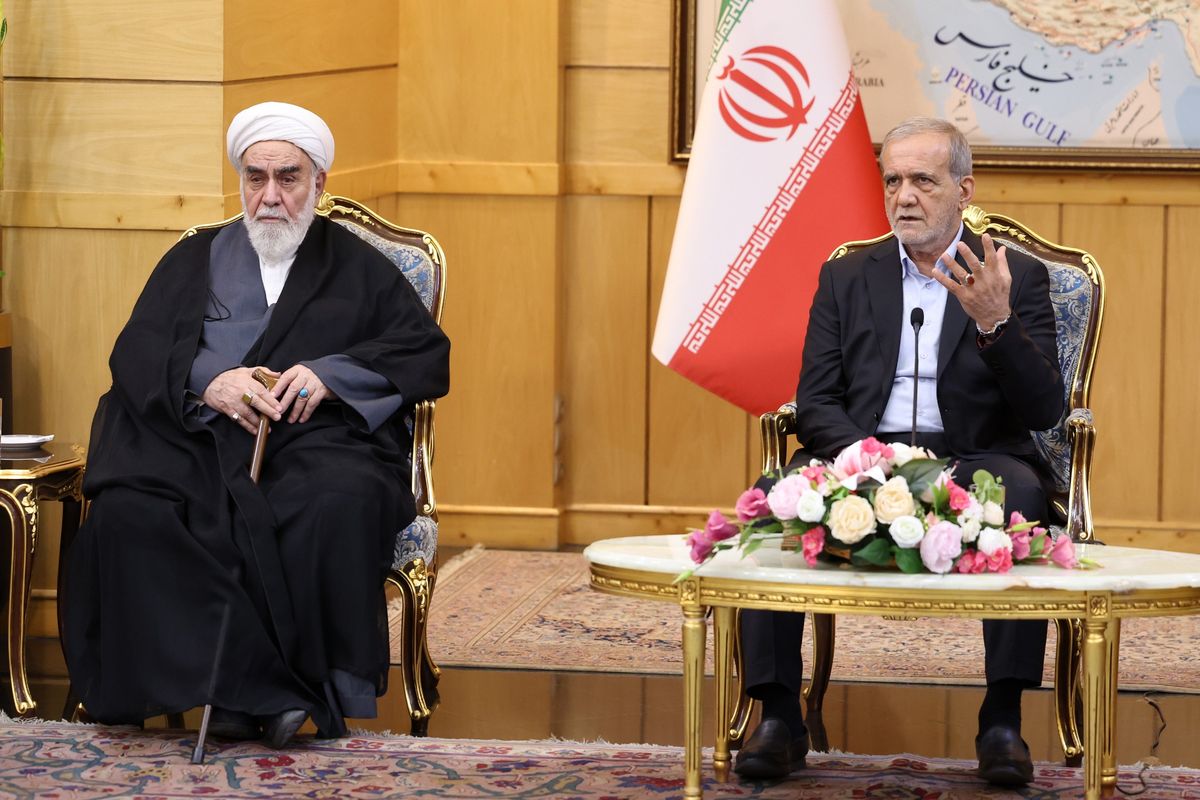In various and sundry NATO countries, the United States has stationed 200-plus B-61 tactical nuclear bombs, current and older versions of which have dial-a-yield settings that allow various explosive yields, one of which is as low as the equivalent of 300 tons of TNT, or 0.3 kilotons.
That was one of my first thoughts as I read the full, 100-page Trump administration’s Nuclear Posture Review (NPR) that was released last Friday, which says the U.S. needs to add new low-yield nuclear warheads to its already ample nuclear stockpile.
Why? As the NPR says, “These supplements will enhance deterrence by denying potential adversaries any mistaken confidence that limited nuclear employment can provide a useful advantage over the United States and its allies.”
The NPR makes no mention of the low-yield capability of the B-61.
The Trump NPR does, however, give credence to the notion that, “Moscow’s perception that its greater number and variety of non-strategic nuclear systems provide a coercive advantage in crises and at lower levels of conflict,” according to the text.
That should remind all of the Cold War days when the U.S. and Soviet Union drove strategic warheads above 10,000 on each side in a costly and ridiculous arms race.
Back in the 1950s and 1960s, American nuclear strategists created all sorts of strategies to justify the buildup, most based on false premises such as Moscow was preparing a massive first strike on the U.S., or the Russians were prepared to fight and win a nuclear war.
The new NPR does more than just promote Russian President Vladimir Putin’s “escalate to deescalate” notion; it comes up with a mishmash of ideas and sometimes conflicting ways to meet what is a false challenge.
Take the idea of developing a low-yield warhead for “a small number” of current U.S. sub-launched ballistic missiles (SLBM), which are the type of ICBMs carried today on American strategic submarines. Four of them are always on station in the Pacific and Atlantic Oceans. Most of their SLBM warheads have yields of 50-to-100 kilotons or more yield.
The NPR claims “deployment [of] a low-yield SLBM warhead [would] ensure a prompt response option that is able to penetrate adversary defenses.”
It adds, “This is a comparatively low-cost and near-term modification to an existing capability that will help counter any mistaken perception of an exploitable ‘gap’ in U.S. regional deterrence capabilities.”
How would Russia, China or any other country know a SLBM launched from a U.S. submarine is low-yield or high-yield, should one ever be used?
The NPR also adds a highly questionable additional benefit to this option. It claims that unlike use of a low-yield B-61 bombs now located in allied NATO countries for delivery by U.S. or allied fighter-bombers, “a low-yield SLBM warhead…will not require or rely on host nation support to provide deterrent effect.”
In short, it could save money. More important is the implication that the U.S. may fire its low-yield SLBM nuclear weapons at a target in a European country, perhaps without prior NATO countries’ approval.
The nuclear-capable NATO B-61 fighter-bombers have another advantage. They are a visible and thus real deterrent to the Russians. How will these sub-launched low-yield warheads be a deterrent unless we announce they are there and in sufficient numbers?
At a Feb. 2, press conference, Under Secretary of Defense for Policy John Rood told reporters, “The fact that you can have some flexibility in terms of whether you signal its presence, or you don't, the flexibility in basing options, given that most of the world's surface is water – all of these things help provide flexible options for tailored deterrence.”
It’s worth pointing out that in the past, these so-called battlefield, non-strategic weapons were not intended to be fired one at a time. A declassified, once secret, 1991 U.S. Army document calls for initially using “tens of low-yield weapons” against enemy mobile targets, essentially tanks. It also mentions “follow-on options to defeat tens to 100+ fixed and mobile targets with a wide range of yields and systems.”
The Trump NPR also calls for exploring reversal of an Obama administration decision in its 2010 NPR that retired the Navy’s sub-launched nuclear cruise missile (SLCM), calling it redundant.
“It has been one of a number of means to forward-deploy nuclear weapons in time of crisis,” the Obama NPR stated. “Other means include forward-deployment of bombers with either bombs or cruise missiles, as well as forward-deployment of dual-capable fighters…The deterrence and assurance roles…can be adequately substituted by these other means.”
The Trump people have another idea. They see the NPR revival of the Navy sub-launched nuclear cruise missile as a bargaining chip to get the Russians to return to compliance with the INF Treaty, which they have violated by employing a ground-based cruise missile in Europe.
“If Russia returns to compliance with its arms control obligations, reduces its non-strategic nuclear arsenal, and corrects its other destabilizing behaviors, the United States may reconsider the pursuit of a SLCM,” according to the Trump NPR.
An additional sign of the confusing signals in this NPR is that while it is emphasizing the need for more low-yield options, it also calls for retention of the B83-1 “past its currently planned retirement date until a suitable replacement is identified.”
The B83, with a top yield of 1.2 megatons (equivalent to 1.2 million tons of TNT), is the most powerful bomb in the U.S. arsenal. The NPR states the rationale for keeping this 35-year-old weapon in the active stockpile is that it, as well as the B-61-11, are to “hold at risk a variety of protected targets,” which means those underground inside mountains.
Along with new warheads, the NPR also indicates the Trump administration fears in the future it may face the need for even more warheads, so it calls for a new facility with the “enduring capability and capacity to produce plutonium pits at a rate of no fewer than 80 pits per year by 2030.” Plutonium pits are located at the core of a thermonuclear weapon, and serve as the trigger for the device.
A pit production facility at Los Alamos National Laboratory currently produces 11 a year and could do 20. A new facility to meet the proposed goal of 80 pits could cost upwards of $2 billion.
The current cost projection for the ongoing upgrading of the U.S. nuclear production complex and the triad of nuclear delivery systems – the 12 new Columbia Class Ballistic Missile submarines, the 100 new B-21 strategic bombers and 400-plus new ground-based ICBMs – plus their operations is put at some $1.2 trillion over the next 30 years.
Many nuclear programs are already underway. The Trump add-ons should make this year’s Armed Services and Appropriations hearings on nuclear weapons much more interesting than in the past.











